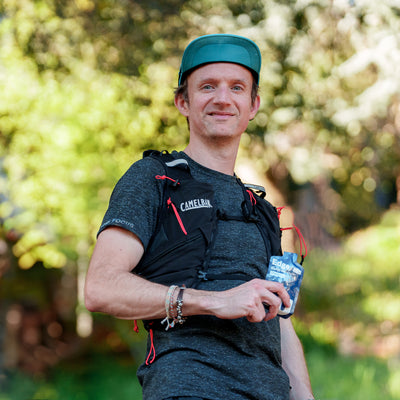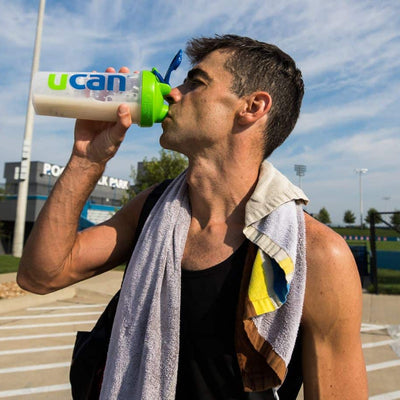LIVSTEADY® was originally developed for an infant with a life-threatening form of hypoglycemia. His condition required him to eat every two hours in order to maintain his blood sugar levels, otherwise he would face a hypoglycemia crisis – when his blood sugar would dip dangerously low. Researchers developed LIVSTEADY to deliver a slow and steady source of glucose so that this child could consume a one-time serving and sleep 8 hours straight, while maintaining steady blood glucose levels. In 2009, this young boy and his parents were able to sleep through the night for the first time since he was born thanks to LIVSTEADY.
LIVSTEADY® Basics
LIVSTEADY® is real food, not just an energy booster. Its complex structure means our body releases its energy slowly, so there's no quick sugar spike like with simple carbs. It's made from non-GMO cornstarch and is processed using a special heat and moisture method without any chemicals or enzymes.
LIVSTEADY® and Your Metabolism
Carbohydrates are a very important macro-nutrient, as they are invaluable sources of energy. LIVSTEADY is a carbohydrate called a polysaccharide, which is a starch. LIVSTEADY has a low osmolality, which means your stomach is able to handle its molecules relatively quickly – this results in less “sloshing around” your stomach during exercise or activities! Additionally, as a result of slow absorption of glucose from LIVSTEADY®, blood sugar levels are maintained stable because the beta cells in the pancreas don’t have to secrete a lot of insulin.
Blood Sugar and Exercise
When your blood sugar spikes, it causes a large insulin response in your body. Insulin triggers your muscles to burn that available sugar for fuel, instead of your body fat. When you inevitably crash from a large spike in your blood sugar , your body interprets this drop in blood glucose as a hypoglycemic threat, often causing a hunger response which can lead to overeating. Since LIVSTEADY offers a much steadier decline in blood sugar, it can prevent those hunger cravings and overeating.
Carbohydrate Confusion
There is a current trend to “fear” consumption of carbohydrates. Current health messaging vilifies carbohydrates, when there are only a few classes of carbohydrates that are fast-acting. Fast-acting carbohydrates can be problematic because they deliver a surplus of calories to our bodies and rapidly leave the system, often triggering hunger. However, here is no need to cut out an entire macronutrient from your diet. Vegetables, fruits, beans, grains, and fiber are also carbohydrates that provide an array of nutrients, minerals, and healthy calories. LIVSTEADY, a complex and slowly released carbohydrate, is one that is beneficial for overall health, blood sugar maintenance, as well as athletic performance. You can eat LIVSTEADY 30-40 minutes before working out and it will not cause stomach issues – due to its low osmolality and lower fiber content than carbohydrates like lentils.
What are the benefits of LIVSTEADY®?
Stable Blood Sugar
LIVSTEADY® helps keep blood sugar stable, and because it doesn’t overwhelm the system with glucose at one time, it does not force the body to deal with glucose if it doesn’t need it. When LIVSTEADY is the body’s source of carbohydrate, muscle has the ability to preferentially burn fat when called for, and preferentially burn carbohydrates when called for, because it’s not busy managing a surge in blood sugar.
Long-Lasting Energy
Fast-acting carbohydrates leave the system very quickly because of a big insulin surge. LIVSTEADY provides long-lasting and stable energy with no crash, so you don’t have to constantly take in fuel during your exercise.
High-Fat Burning Potential
LIVSTEADY® creates an environment to enable fat burn. Fat tissue is very sensitive to insulin. LIVSTEADY is designed not to compete with glucose – if you can keep blood sugar stable (and therefore insulin low), the muscle has steady delivery of fatty acid to be burned, rather than the carbohydrates you eat.







